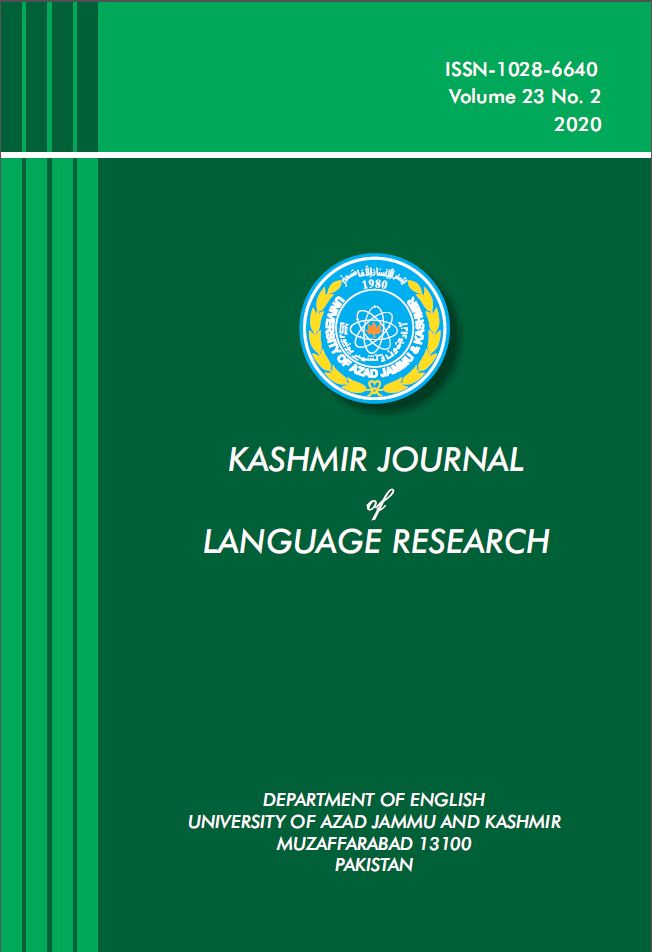Mr. Ramsay’s Idiosyncratic Mind Style: Cognitive Explication through Blending Theory
Keywords:
Mr. Ramsay, Idiosyncratic metaphor, Blending Theory, Mind StyleAbstract
This paper presents a detailed analysis of the various idiosyncratic metaphors used by Mr. Ramsay, a character in Virginia Woolf’s novel To the Lighthouse. Blending theory is used to explain the construction of the metaphors which Mr. Ramsay uses during his contemplations and utterances. This study establishes the relevance of these metaphors with the challenging academic situation of Mr. Ramsay. Semino’s conceptual networking presented in her paper A Cognitive Stylistic Approach to Mind Style in Narrative Fiction3 (2002) is used as framework for the study. The study concludes that metaphors are not mere linguistic variety but are programmed on a deeper level of cognition. This cognitive mapping of metaphors justifies Mr. Ramsay’s idiosyncratic behavior through unfaltering rationalistic attitude and delimits his character from a narcissistic sympathy seeker to a competent academician who bravely survives the academic challenges.

Downloads
Published
Issue
Section
License
Copyright (c) 2021 Kashmir Journal of Language Research

This work is licensed under a Creative Commons Attribution 4.0 International License.




